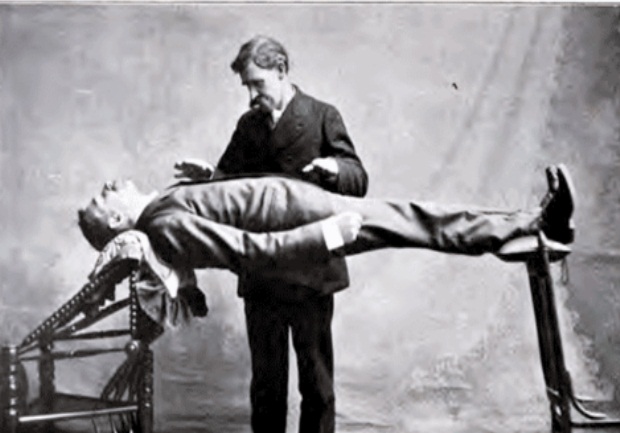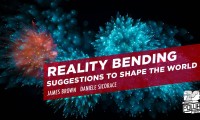Greetings all, this week we are going to touch on some hypnosis again. When talking about the use of hypno in a social engineering or entertainment context it often comes down to the phenomena your going to utilise. To people not in the know these words may not mean much to someone, and I have on regular occasion been asked to give a brief description of them. With this in mind I thought it would make a good post.
One of the first things to be aware of just because one form of phenomena doesn’t work with someone, doesn’t mean another type wont either. As we have discussed before, everyone is different, everyone is playing their own game, and the because you give to one person, will not register at the right level with one person does as another.
So what is hypnotic phenomena. One of the books I have read calls it a natural behavioural and experiential manifestations of the trance state. This is great, if you understand it, and your believe in the trance state definition. I agree that these are behaviours we experience naturally, we have all forgotten things for a period of time, found an arm feeling tense, and rigid. So all we are doing is communicating the recreation of these experiences to the subconscious mind, and having them delivered in the form the subject can accept as a reality for however long that may be. Do you need a trance state? I think this is up for debate, are we always in a state, is there such thing? I do know you can give someone amnesia for something without going through what some may call hypnotic processes, I guess you need to make your own mind up on that one.
Types of Phenomena:
Catalepsy – This is when there is a locking of the muscles, and reduction of psychomotor activity resulting in the ability for the subject to maintain a specific posture of position for a long period of time without the sense of fatigue. Examples of this is making the arm stiff and rigid like an iron bar, or the entire body between two objects allowing someone to sit on them like a bench, or even stuck and locked solid on the spot.
Time Distortion – This is pretty obvious from its name. A subject experience hypnosis will have a subjective experience of time, and naturally may feel that more or less time has passed whilst they were experience hypnosis than has happened in reality. As described this can be a natural occurrence, or time distortion can be forced by stating it as part of the hypnotic experience. An example of this would be putting someone to sleep, and moving them or carry out some activities in the background for several hours, and when brining them out of hypnosis having them believe only minutes had passed.
Dissociation – This is really a process that forms the basis for many of the hypnotic phenomena. It is the dissociation from the conscious and unconscious minds, suspending the logical, rational and intellectualised thought processes. This can lead to things such as positive and negative hallucinations, its a good stepping stone.
Amnesia – Probably one of my favourite phenomena, and one everyone knows, forgetting things 🙂 So amnesia is the functional loss of the ability to recall or identify information. The amazing thing about this in a hypnotic context is the ability to create the amnesia of things that would seem impossible for forget, such as the subjects name, or age. Common examples as said already are giving amnesia for someone’s name, not able to recall numbers, or even amnesia for the hypnotic experience itself.
Hallucinations – Again people know what this is, and with the use of hypnosis we can bring about positive and negative hallucinations. A negative hallucination are removing the perception of stimulus that exists, this could be not seeing an object that is really there, not smelling a smell that is present, etc. A positive hallucination refer to experiencing stimulus that don’t exist, this could be seeing an object that is not present in the room, tasting a drink that does not exist and so on. Good examples of this can be making yourself invisible to the subject, having them believe a glass of water is a glass of beer, and have them experience the same emotions as when drunk, etc.
Post Hypnotic Suggestion – We have touched on this before with regards to creating our zombie army. Post Hypnotic suggestion refers to the execution at some later time or date, or instructions or suggestions given during a previous hypnotic experience. Examples of this can be during the hypnosis session the instruction that on future hearing of the command sleep from the hypnotist they will return to a deepend state of focus, or that on a future word, touch or visual stimulus they will once again experience the hypnotic phenomena, such as not being able to see the hypnotist, essentially anything you have been able to achieve before can be replayed upon instruction at a later date.
Analgesia – This is the dulling in the awareness of pain, this is slightly different to anaesthesia which results in the complete lack of pain awareness. An example of this is having numbness in body parts, allowing to be pricked by a needle with no feeling, there are extreme cases such as where Dave Elman used this when someone had a heart transplant under hypnosis, as there were allergic to medical anaesthetic.
Hopefully this provides you with a little bit of insight into the most common / popular types of hypnotic phenomena. As usual if there is something in particular you would like to see covered on Head Hacker please get in touch via email dale[at[headhacker.net or @headhacking on twitter.
Until next time….. Happy Halloween

















